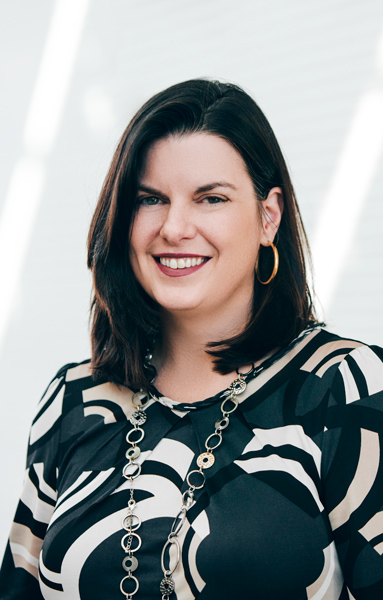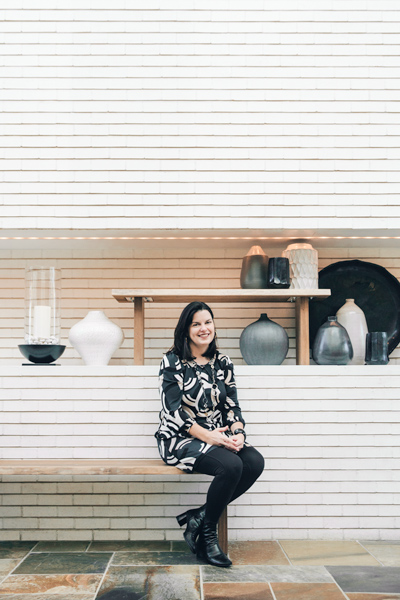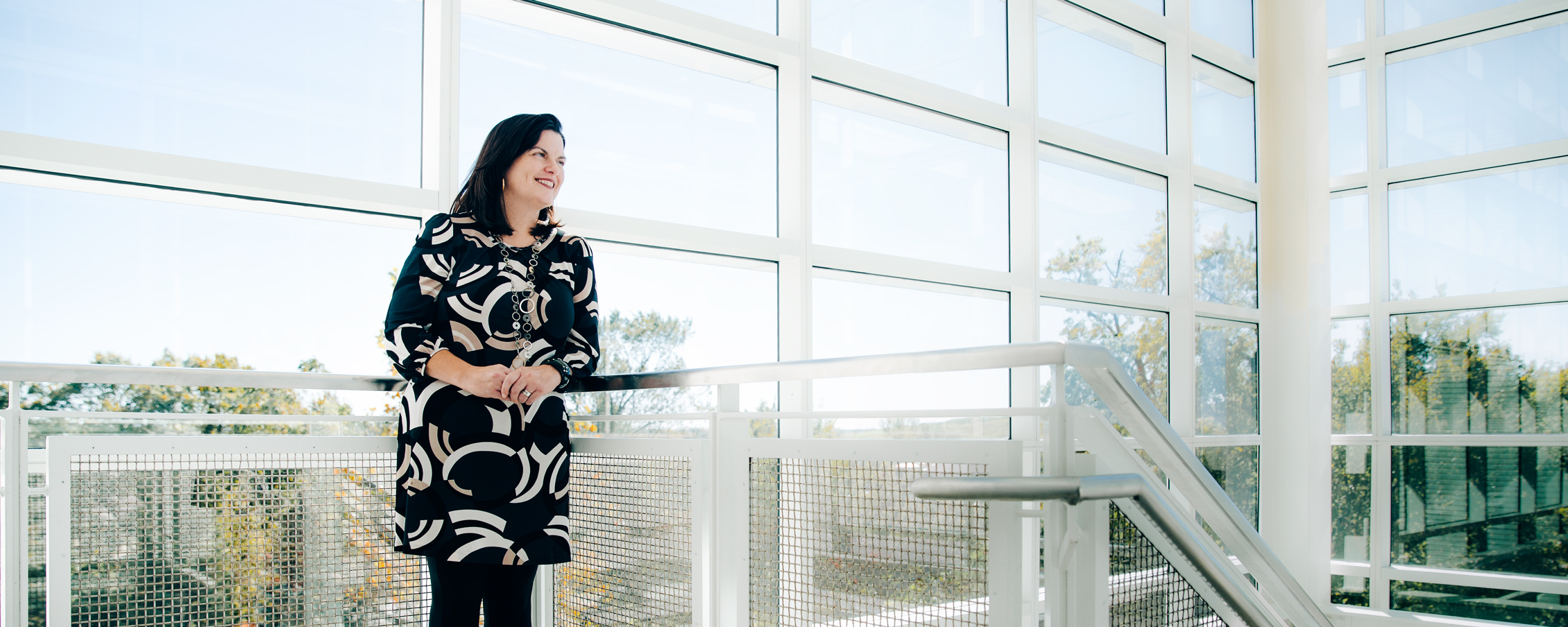Joan King doesn’t think in terms of either/or questions.
From her desk in a cozy, brand-inspired office at the Northbrook, Illinois, Crate and Barrel corporate headquarters, King gently steers a question about driving customers to the website or the mobile app where it belongs: centered on the customer. “It doesn’t matter what I want,” King says. “It only matters what customers will do.”
As the vice president of eCommerce, King’s role is to guide her team in creating the optimal customer experience for Crate and Barrel shoppers in whatever digital realm they frequent. The team is platform-agnostic and completely guided, as King says, by what customers are already doing. The team is constantly testing and tweaking, because rather than work to drive customers to where they think they should go, Crate and Barrel’s e-commerce team meets customers where they are and aims to make that experience as comfortable, seamless, and inspirational as the in-store shopping excursion.
Staying Ahead of What Customers Want
King has spent her whole career embracing new opportunities to stay close to customers and steps ahead of the curve. When she started at Crate and Barrel in 2001 as an information architect—a title, she explains, that was centered around customer experience at the time—the storied housewares company was just beginning to bring the majority of its website functions in-house. Crate and Barrel started by launching its popular wedding registry online, and followed over the years by adding a broader array of product options, starting with housewares. A few years later, around 2003, the company made the bold-at-the-time choice to sell furniture online, despite concerns that customers would prefer to touch and feel the product or, conversely, that online success could negatively affect in-store sales

As the website grew and omnichannel retail emerged, King’s roles followed suit. “As jobs would evolve and new opportunities were presented, I’d take them. I dug into the analyst role where we first completed all the tagging on the site and then moved on to do all the related analytics,” King, who has always been fiercely motivated by the customer experience, says. “As new needs would pop up, I would always raise my hand. It was a beautiful marriage of, ‘Well, we have a need but we’re not clear on what the role is,’ and, ‘Joan can figure it out.’”
And she did. King developed A/B testing for the site before A/B was a commonly used term. She studied the online behavior of customers before UX was ubiquitous. She looked beyond the then-popular tool for customer feedback—the focus group—to bring more frequent and reliable customer feedback to the forefront of her team’s work. King understood early on that adopting real-time feedback was instrumental in developing the site.
“If you wanted to spend twenty grand and get one single test, you did a focus group,” she says. That becomes prohibitively expensive and only allows for customer insight a few times a year. Rather than waiting for customers to report back on their experiences, King pushed her team to be constantly listening. “Everybody has to be ingrained in that mentality, understanding what the customer is struggling with,” King says. “Managing usability testing was the next role that I took on. That has enabled us to have a really strong customer experience: our team has always done that in-house.”
Understanding Online Behaviors
During her time as senior customer experience analyst, King completed coursework for a PhD at the University of Illinois at Chicago. She has a BA in English and an MA in writing—having studied “the rhetoric of online spaces,” many of her courses and advisors were from the technology and communications departments. “At that time, Facebook was not yet started, and e-commerce was still in its first generation,” she says. “I was intrigued by how communication was evolving—or rather really needed to evolve—to truly take advantage of the medium that was user-driven, nonlinear, and changing every day.” That educational foundation in how people communicate online infuses everything she does now.
King attributes her tenure at Crate and Barrel, in part, to the impactful leaders she has worked with. At one point, King made a pivot and scaled back some of her responsibilities when she had her three children. She then scaled back up once they were older and the need arose to organize the e-commerce department around product teams. King’s career passion has always brought her back to roles that best influence the customer experience. Her refusal to differentiate between an online customer and an in-store customer comes in part from the fact that customers are, more often than not, the same person in different circumstances. For that reason, she values a holistic approach to customer service that takes every interaction with the Crate and Barrel brand into account. King encourages an environment of constant testing and pivoting, of paying attention to what the customers are saying—either directly, through hundreds of comments daily on the site’s functionality and features, or indirectly, with information about how they behave.

“We have great tools available to us, with data and usability testing and A/B testing, that enable us to make sure everybody on the team doesn’t fall in love with their own stuff. Customers will tell you immediately if it’s not working,” King says. “The comments are a gift that our customers give to us every day. Our CEO reads them, I read them, and the other product managers and most of the team read them. It’s part of our routine: they just start the day with their coffee and their customer comments.”
Bringing the Right Products to the Page
King’s driving philosophy is that when customers are interacting with Crate and Barrel digitally—whether through the app, the mobile site, or the desktop site—the driving force for sales is the customer experience, a job made more compelling by having beautiful products for customers to engage with.
“There’s no excuse to not find out why customers don’t like something and to then prioritize making it better, because at the end of the day, our customer experience is what will drive sales online. Online, we don’t have associates. We don’t have the store with its gorgeous displays and the physical product,” King says. “You have to prioritize making the customer experience the most seamless, inspirational, frictionless thing. If you don’t, every piece that adds friction, every piece that doesn’t meet their expectation, you can lose sales. They can choose to go somewhere else or get distracted.”
The Crate and Barrel website has infinitely more options than any brick-and-mortar store, when taking into account the nearly endless combinations of styles, fabrics, and features that customers can choose for custom furniture. A major challenge is how to show those options to the customers. One big-picture goal in the past year has been to enable custom upholstery ordering through the website. That involves not only showing customers what their sofa will look like in the selected turquoise fabric with walnut legs, but also gives them dimensions, shows a video of people sitting on the sofa, and enables customers to add the custom option to a personalized mood board. The mood boards are always connected to their account and can be accessed in stores as well. For those customers looking for more guidance on choices, there is a 3-D room designer and the in-app augmented reality feature. Much like how Crate and Barrel pioneered how customers shop for home furnishings in stores, the retailer strives to bring the same experience online. Everything is designed to allow the customer to visualize the furniture in their home, whether they’re standing in front of a store display or sitting in front of their laptop.
Personalizing the Shopping Experience
Another crucial focus for the e-commerce team is personalization. As King explains, retailers like Amazon are influencing what customers have come to expect online, and that includes a highly personalized experience. Customers want brands to understand who they are and deliver solutions for them. That expectation only increases when people make a big purchase and have invested in a brand.
“You have to be where your customers are or you’re going to miss the opportunity to interact with them in a modern way,” King says. “As a customer, if I’ve come to your site and I’ve been looking at sofas, why don’t you know that? And then meet me back at Pinterest with some recommended sofas and follow me around with the things that you know that I like.” In addition, customers are moving to mobile in droves: mobile now accounts for nearly 40 percent of all online traffic to Crate and Barrel, a figure that continues to grow every year. But King and her team view the mobile experience as an extension of the in-store experience.
“A lot of times, in the store, customers are pulling up their phone and reading reviews and doing comparison shopping,” King says. “You can’t look at it in terms of store sales and online sales. You have to consider brand sales, and digital plays a role in supporting brand sales. The customer doesn’t differentiate between buying from the website and buying in-store. They just bought from the brand.”
This platform agnosticism is driven by a team that takes pride in working for Crate and Barrel, King says. Everyone is passionate about their role in supporting a brand with such high standards, she says, and so they are constantly raising the bar for themselves. That helps the team stay out of their silos, not get too attached to any one idea, and put the focus on the customer above all else.
That focus and pride is evident as King shows off the latest online features from her office desktop. She is excited to know that another user is planning to try them out and see how they work—and how they don’t work. Praise is nice, but criticism means there’s a way to get better.
“Tell me what you find,” she says. “And don’t just tell me the good stuff.”
The Magic of Customization
The Crate and Barrel e-commerce team uses technology to enhance the customer experience
Augmented Reality:
The Crate and Barrel app, which King says is geared toward their most loyal customers and those who use it to build a wedding registry, has a “View in Your Room” feature. It connects to a smartphone camera and allows the user to take a picture of the item wherever they imagine it going.
Mood Board:
Any item on the Crate and Barrel website can be saved to a mood board, letting customers put together their dream living room or collect ideas for table settings. The mood board can be created with the help of an associate in a store or online, and then can be accessed in both places. The mood board even keeps a running cost tally, so you can adjust the ideal décor based
on budget.
Sectional Planner:
There are endless ways to customize Crate and Barrel sectional sofas, and so the e-commerce team built a feature into the website that allows customers to mix and match pieces, try different fabrics, and see what different configurations will look like. “A sectional is a big purchase, and if people can’t see exactly what that furniture is going to look like, they’re going to have a hard time committing,” King says.

